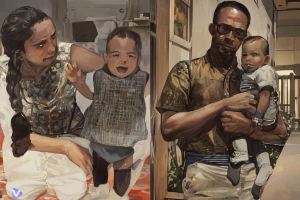By Ishaan Tharoor —
After the United States helped chase out the Taliban government in Afghanistan in 2001, it came across a legacy of its earlier intervention in the region. As The Washington Post reported in 2002, the United States had spent millions of dollars beginning in the 1980s to produce and disseminate anti-Soviet textbooks for Afghan schoolchildren. The books encouraged a jihadist outlook, which was useful propaganda at the time for a Washington driven by the imperatives of the Cold War.
“The primers, which were filled with talk of jihad and featured drawings of guns, bullets, soldiers and mines, have served since then as the Afghan school system’s core curriculum,” The Post reported. “Even the Taliban used the American-produced books, though the radical movement scratched out human faces in keeping with its strict fundamentalist code.”
Printed both in Pashto and Dari, Afghanistan’s two major languages, books such as “The Alphabet for Jihad Literacy” were produced under the auspices of the U.S. Agency for International Development by the University of Nebraska at Omaha and smuggled into Afghanistan through networks built by the CIA and Pakistan’s military intelligence agency, the ISI.
Since the Taliban’s ouster in 2001, American authorities have invested heavily in helping modernize Afghanistan’s woeful education system, opening it back up to girls and revamping the backward curriculum put in place during the Taliban rule. But despite moderate gains, many challenges remain. And, according to at least one American scholar, these old anti-Soviet textbooks are still in circulation.
Dana Burde, an assistant professor of international education at New York University, says the Taliban is reprinting and using old U.S.-sponsored jihadist books to influence children in areas where the militants still hold sway. Burde says she found multiple reprinted copies of some of the texts, including a 2011 edition in the Pakistani city of Peshawar.
According to Al Jazeera America, the Pashto version includes such chilling entries as “T” is for “topak,” or gun. How do you use the word? “My uncle has a gun,” the entry reads. “He does jihad with the gun.”
Other lessons instruct that Kabul can be ruled only by Muslims and that all Russians and invaders are nonbelievers.
In a recent book, Burde raises the issue of the continued presence of these books as part of her research on the unintended consequences of foreign aid policies in countries riven by conflict.
In an interview with NPR last week, she explained the calculations made by American Cold War strategists who sponsored these jihadist texts.
Picture yourself in the mid-’80s. Preventing and countering Soviet expansion was a single-minded focus in the United States and across the West. After the balance of power shifted and the shah of Iran was overthrown, there was an enormous amount of suffering among the Afghan people, and an exodus of epic proportions, similar to the Syrian refugee crisis today. There was a lot of outpouring of support on both the right and the left for Afghans struggling against the Soviet occupation.
As part of this war effort and consistent with the spirit and goals of the time, the alphabet of jihad literacy tried to solidify the links between violence and religious obligation.
As The Post reported in 2002, UNICEF destroyed at least a half-million of these “militarized” schoolbooks. But the consequences of decades-old American policies in the region still linger, in ways both big and small.
– Ishaan Tharoor writes The Washington Post and was previously a senior editor at TIME.
The article first appeared in The Washington Post.




